Interview 067 • Jun 11th 2018
- Interview by Lou Noble, Portraits of Savana Ogburn by Jason Travis
About Savana Ogburn
Savana Ogburn is a photographer, collage artist, and set designer based in Atlanta, Georgia. Femininity, camp, and queerness are frequently explored in Savana's work through the use of bright colors and textures. Her goal is to tell the most wacky and surreal stories possible.
Links
Foreword
We invite you to step into the world of Savana Ogburn, a place where one's identity is but a starting off point. Her art acts as an avenue for self-exploration through her Identity Crisis series, and this concept flows naturally into her other work; it's this series that has helped to establish her mix of off-the-wall styling combined with collage and illustrative elements that make you second guess their realm of origin.
This interview has been edited for clarity and content.
Interview
This is your first year of college, right? Or second year?
I just started my second year, mhmm.
How’s that been going?
It’s been good, I mean I really love being at art school, I love it, I’ve seen my work progress so much.
Yeah, I know a few people who went to SCAD and I’ve heard, people have different experiences.
Yeah, I mean, hmm…I don’t know if you saw the article that went up, the big expose that went up like a week ago.
No!
Oh yeah, it was nuts. I mean, there’s definitely stuff about SCAD that’s like, shady, that’s not great, but I think it’s kind of what you make of it.
Right. What made you decide to go to art school?
I mean, I’ve never wanted to do anything else. Whenever I was thinking about what colleges to go to, I was already pretty deep into photography and making things, so it sort of felt like the only option.
But you knew you wanted to go to school as opposed to just start working as a professional?
Oh yeah, I knew that I needed some kind of structure and more instruction.
Right. And you just finished your second part of your Identity Crisis project?
Yes, I just finished the part two, which is nine new portraits, to follow up the first zine that came out earlier this year.

March?
Yes, yes.
What initially inspired the project?
So yeah, I was in an intro photography class earlier this year, in January or February, and one of my professors saw some of my self-portraits, and he was like, “oh, you need to look up Cindy Sherman, you’ll probably really like her.” I did, and her work just really resonated with me, just the playfulness, the campiness of the images really stuck with me, and it was around the same time as I was getting really into drag. So it was just sort of clear that I needed to be getting into drag for pictures.
What was it about, you said some of the campiness, what else was it about her work that resonated with you?
I mean the color, I’ve always been interested in self-portraiture, I was really into the conceptual photography on Flickr, that scene, when I was younger. I was relying on self-portraiture a lot of the time because it wasn’t like I could…I mean I had a couple friends who would model for me, but being your own model is just really convenient. I was interested in that aspect of her work because it was something that I identified with. But yeah, her use of color and costumes, it just feels like she’s really, she has a lot of freedom with the ideas she’s coming up with.
Why continue after that first sequence of images?
Honestly, because it’s so fun! I realize, I shot all but one of the first Identity Crisis pictures, like from the first zine, in one studio session, so it was just a really quick thing and I realized, I want to do more of it, I have so many ideas for it, that I felt like I couldn’t use them in other parts of my work, so it was just kind of obvious that I needed to.
Do you see a difference in the first section and where you are now with the second series?
Oh yeah, oh my gosh yeah. Like I said, the first one was shot almost all in one day, or in a 5 hour period, whereas the second one, I did it over the summer when I was home, so I was spending a day or so figuring out makeup and a costume and a set for things, and able to really pour more time and energy into each portrait, so they’re way more detailed. I feel like the characters are more realized than they were in the first one, they’re just so much more bizarre. I really had time to snowball, to come up with a character and be like, “oh yeah, I should be a pageant queen, but I should be the pageant queen of green beans, and I should be taping my nose up and making the set to go with it.”

So more complex, as well?
Yeah, for sure.
Is there something you’re trying to get across with the images? Or is it more process-driven?
I think it’s primarily process-driven, but with my work, a lot of the time, I’ll make it and then a couple months later I’m like, “oh I was definitely trying to get something out through this,” and at this point, identity is just something that I think about a lot in terms of artifice and performativity. I think about performative femininity a lot, and I think that kind of comes through in these, the ideas that we have about gender and the expectations and how you perform that and project it just through, just what you wear on a daily basis, or like me, what I wear on a daily basis, how I act, so that’s been inspiring, to push some of these concepts. But it is primarily process-driven, I think.
Do you find that’s also why you became so…you became interested in drag, those same issues of performative personality…
For sure, Initially, my friend showed me Ru Paul’s Drag Race last year, so it’s been a little over a year that I’ve been into it, but I was so tickled by it, because it’s hilarious, so that’s kind of what roped me in, the campiness and the absurd visual, you know, everything is really pretty a lot of the time, and thinking about performativity, and the way that these queens a lot of times will like perform femininity is so interesting, and the different ways that they do it, you can really tell a lot about how we see women. Which is cool.
Do you find yourself drawn to it photographically, as well? Is it something that you want to explore artistically? Is it something you want to explore more in your photography?
Oh drag, yes for sure. I mean, I really love shooting with drag queens. One of my friends does drag, and shooting with him is a breeze because, I mean, with queens, a lot of the time, they put so much work into their appearance that it’s like, they want to be photographed. So it’s really fun to do that and sort of push the fantasy of it, yeah.
Do you see your photography as an escape, or more as an examination of yourself?
A little bit of both. When I wrote the artist statement for volume two of Identity Crisis, I was like, “oh this is escape, that’s totally what it is, because that’s how it feels,” you know, but a week after I wrote that, I was like, “nope that’s not it!”
Ha!
Which happens every time I write an artist statement, but I think there’s definitely me in these pictures, like I’m definitely examining some super-high femme stuff, but also using it as a form of escape; it’s a little bit of both, really.


Are there other themes you try to work out in work other than your self-portraiture?
I’ve gotten really interested in artifice, and I’m interested in exploring that more, without people present. I did a series of still lifes for a class this quarter that was inspired by gluttony and artifice, things like that, and it was a bunch of really nasty food still lifes. So I’m interested in playing with that a lot, and I’ve always just loved fantasy, too, the first photographer that I really cared about was Tim Walker, and just how he can totally create worlds, and I think that’s a consistent theme in my work, too.
What is it about his ability to create worlds that appeals to you?
The detail, the detail is amazing, in his work. And even in his more simple portrait pictures, you see the images and you know that they’re his, just the level of detail and the fantasy, it’s all there in all of them.
Are there other photographers that you’re drawn to because of their strong aesthetics?
Yeah, I mean, I love Ryan McGinley, he’s the first that came to mind, because I was looking at his work the other day and kind of freaking out, it’s so good. In the same vein, I love Olivia Bee. One of the first things that pushed my photography and my collage, too, was Rookie Mag, who I’ve been contributing to for a couple years now, so through them I found Olivia Bee, Petra Collins. That’s influenced my work a lot, just a lot of the work that goes up on their site. I love Andy Warhol’s photography, I’ve always really loved him but lately I’ve been really looking at his photography because it’s so clear that he was obsessed with documenting things, it’s so cool to look at.
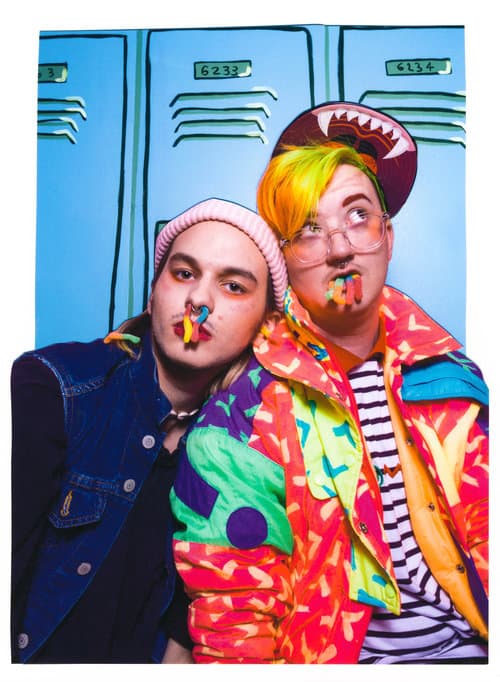
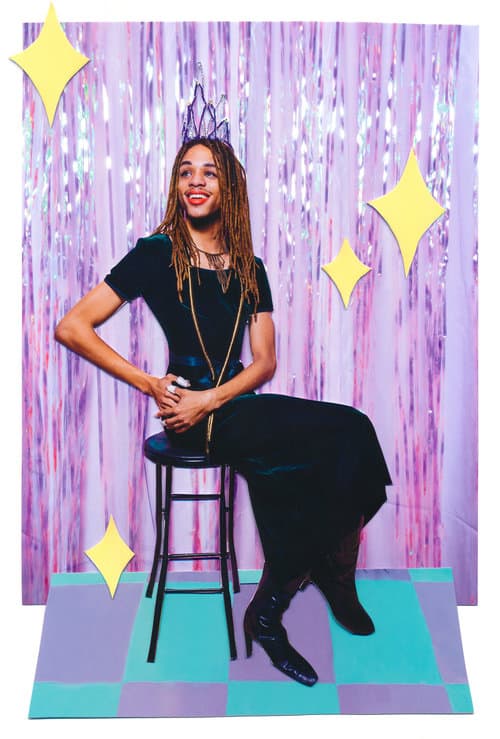
One other thing that I’ve noticed about your work is the diversity of your subjects. Is that something that you’re conscious of? Or you just happen to do?
Yeah, I’m definitely conscious of it. And shooting for Rookie, I got brought on board with them when I was 17, and I’m 20 now, but doing castings for them, before that I was shooting self-portraits and then two friends. But when I started shooting for Rookie, I really had to be conscious of diversity in my work, and it became something that was like important to me personally, too.
Why did you have to become conscious of it in your work?
I mean, Rookie has a really diverse viewer readership, so wanting to be aware of everyone who’s looking at my photographs and making sure they felt represented adequately and well was important.
Was that something that you came up with on your own? Or that they asked of you?
A little bit of both. Going into it, I knew I needed to be shooting more than myself and my best friend, and so I was sending castings to them, and they would give me feedback, too, which helped a lot in the beginning. But now it’s like second nature.
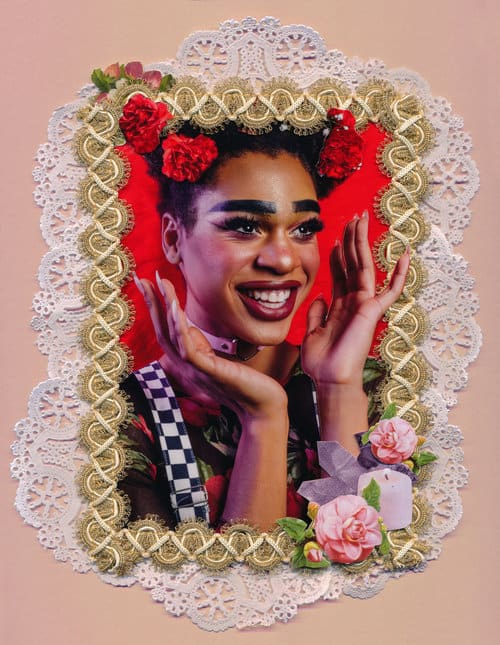
Do you find it easy to find the kind of people you’re looking for?
You know, most of the time yeah, it’s pretty easy. I mean, I’m in art school and it’s a pretty diverse population, so I’m really able to just pull from my friends a lot of the time. There have been instances where I’ve done model calls on Instagram, and 20 white girls respond and I’m like, “you’re all me! I can’t work with just y’all!” It can be hard in situations like that, but most of the time it’s not that hard. People act like it’s hard to have diverse casts, but it’s not.
For you, it doesn’t seem like there’s a difference between the job and the art, do you see a distinction between what you do for work and what you do for yourself?
I mean, most of the time yeah, I think there’s a distinction, because when I’m working with a client, there’s pressure to do what they’re going to like. But with clients, they hired me for a reason, so I feel a certain degree of freedom in that, and I can enjoy it the same way that I enjoy my personal work. But Identity Crisis is so far from commercial work, there was definitely a distinction between that and between, I don’t know, an editorial I would do for Refinery29.
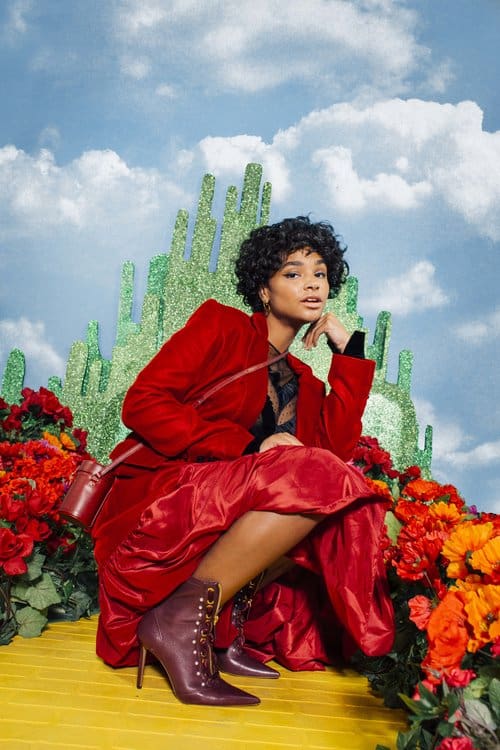
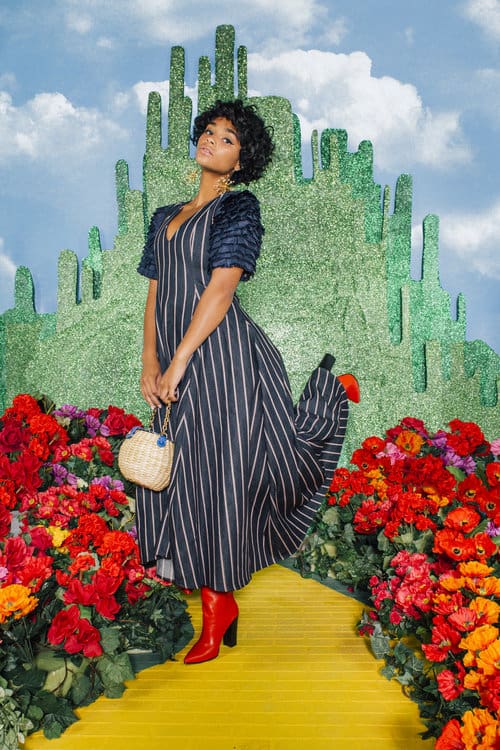
Right.
There’s a pretty big jump, but I think that the element of fantasy is still there and I enjoy it the same.
I think I notice this more with young photographers: do you see, because people who are older, thirties,fourties, fifties, so on, I used to notice would have a problem with the commerce side. They wanted to make their art, but would chafe at the actual business stuff.
Right.
Do you feel that same kind of…chaffing at having to do social media for promotion, and having to think about the business aspect of photography?
Yeah, yeah! In an ideal world, I would be a little hermit just making my art, alone in my room. Social media is fine, it can feel really soul-sucking sometimes, I’m sure you know.
Definitely.
And having to market yourself can feel that way, too, when you’ve put a lot of emotional weight into your work, and a lot of time and labor, it’s like, “oh well I’ve got to sell it, now.”
Right.
I don’t love the business side, but I’ve sort of accepted it as something that I have to do because I want to make money doing this.
What kind of career do you see for yourself?
Honestly, I see myself freelancing. I would like to maybe explore the art direction side, or more with set design, but I really just see myself freelancing at this point, but who knows.
Freelancing for commercial work?
Yeah.
Versus a fine art career?
I mean, I would love to have a fine art career, but I think realistically that there will need to be some commercial definitely happening, as well.

And we touched on this earlier, we ask this of everyone, on the whole, do you prefer the process or the result?
The process, I think.
Why is that?
Because, I mean, using Identity Crisis as an example, I’m able to create a whole world. With this series, I start with a makeup look and I can build a costume, and then do a set, and I have the image and I’ve edited it, and then I’m printing it out and collaging it. There’s just so much and so many opportunities to build on just an idea that I really love that. And the result is like a nice bonus.
Are there feelings of catharsis when you’re through working on these images?
There can be, but honestly a lot of the time there’s just a lot of satisfaction from physically making things, and collaging and doing set design, and the sort of physical aspect of the work has become really important to me.
Do you look back at your older work?
Yeah, every so often.
What do you think of your older stuff?
I realized the other day that so much of what I don’t like about my older work is that…I was like, playing along with conceptual photography, or that realm, but I was really just doing it for the aesthetics, the very Flickr 2011-2012, yeah, I was very into that aesthetic. I love conceptual photography, but my work didn’t mean anything to me, I was setting my hair on fire in Photoshop just to set it on fire in Photoshop, there wasn’t too much happening up here on a conceptual level. And that’s sort of what bothers me about it…I just try to learn from it.


How much credit do you give the internet with stoking your love of photography?
I mean, all of it. I started photography because I saw a bunch of cool people on Facebook using PicNic to edit their pictures, and I was like, “oh that’s amazing, haha! So I was using my camera and taking pictures of flowers in the sky, telephone wires and stuff, and PicNic-ing them to hell.
Haha!
It snowballed from there. I found Flickr, and then I got on Tumblr and got Rookie, which was huge. And I’ve been introduced to pretty much every photographer that I care about on the internet.
What was it about Rookie in particular that appealed to you, or resonated with you?
It was made for teenagers by teenagers, and it didn’t talk down. It didn’t dumb itself down, and it’s very real. They’re still publishing work and it’s still a very human voice that they have. The visual side of things has always been very different, this whole Petra Collins aesthetic that’s happening right now, that everyone is trying out, literally started from Rookie. They just had it down. They had such a unique aesthetic and point of view and all their photographers seem to just roll with it. I had never seen people photographing teen girls like that before.
Were there other places, as well? Or was Rookie the main…?
It’s really just Rookie. There are a lot of sites that are obviously inspired by Rookie, at this point, but a few years ago when I found it, it was pretty much just them.
Yeah. Do you find Refinery29 is a…?
Not quite. I mean, there are aspects, when you look at what Teen Vogue is doing now, which is great, their work has become a lot more diverse and representative of actual teen girls, in most cases, and I don’t think that would have happened without Rookie. So it’s interesting to see the impact, but yeah.
How is it hanging out with a bunch of other photographers, now that you’re in college?
Oh it’s so good. It’s great, like one of my best friends is my roommate and she’s a photographer, too, and just having that constant sounding board is invaluable. And then one of my other good friends from SCAD does drag and is also a fashion designer and a makeup artist, so I collaborate with him all the time, and it’s just really bumped my work up a lot.
Why SCAD as opposed to some place out of town?
Yeah, whenever I was visiting colleges, I was like, “oh I think I want to be in New York,” because it seemed like everyone that I followed who was doing what I wanted to do was there. So my mom and I went and we toured Parsons and we toured Pratt, and I just wasn’t sold on either of them. Parsons felt very sterile to me. I had visited SCAD before, their facilities are really inspiring to be in, or at least when you’re in high school, coming out of a public school you’d be like, “wow!” So I had been there and had been wowed by it, but at Parsons, it felt very sterile, and I just wasn’t comfortable there. I honestly talked to a couple of Pratt students about the photography program, and decided it probably wasn’t best for me. SCAD’s close to home, it seemed logical.
Nothing on the west coast?
Nuh-uh, I didn’t even look, honestly, haha!
Ha!
SO: Yeah.
Are you still doing your music zine, as well?
No, no. I put her on an indefinite hiatus. I was doing everything myself. I had a bunch of contributors who were sending in really great work, but I was editing pieces, I was communicating with contributors, I was editing the site, I was making the physical zine, press requests, and it’s just a lot for one person, and I realized it was cutting into my photography time, into my personal art time. I was just like, “I don’t need to do this.” I’d rather be focusing on my personal work, just seemed more beneficial.
Have you found other disciplines at SCAD that are helping influence your photography?
Yeah! I took 3D design class my first quarter, it helped give me an awareness of space. I’m interested in sculpture now, which I think has sort of informed my set design. And problem-solving on a 3D level as opposed to just working on a flat photo. I can see that in my collage work, too, it’s gotten more complex for sure, because I have that sort of awareness. Also, I feel like I sort of want to dabble in everything, which is hard because, even at art school, I can’t.
Haha!
What else have I done…there are bits of illustration that are interesting to me. Primarily sculpture, I think that’s interesting.

Do you think you’re going to stay in Atlanta once you’re done?
I don’t know, I’m honestly open to staying, but I think eventually I’ll probably be in New York because I’ve always liked being there, I’ve visited a number of times, and it seems like it makes sense. Most of my freelance contacts, most of the people that I’ve worked with are in New York, so it just seems logical.
Do you like New York as a city?
Yeah! Yeah I do, I really enjoy being there. There’s so much going on all the time, which is nice, and there’s a lot of art there, a lot of artists there, and at this point a number of my friends live there, so I love going and visiting, for the people, too.
Do you like to stay constantly busy?
Yes, yes for sure. I love to have creative projects to think about and when I’m bored I’m depressed so I try and not deal with that as much as I can. And I also just really like making art, it makes me happy to do it, so I want to be doing it all the time.
Are you usually juggling several projects at a time because of that?
Oh for sure, yeah, I always have a post-it note above my desk that just has a list so I don’t forget about something, so nothing gets lost. Right now it’s slowed down a little, I just finished up an editorial I did for the new Conde Nast site, Them, that my friend and I collaborated on, so just finished that. I started making a random little collage zine last night on a way smaller scale, that’s something that I’m working on.
Smaller scale than Identity Crisis? Or Them?
Oh yeah, it’s just for fun. Yeah, I like making zines just to get the juices flowing, so that’s what that was. I have a series of self-portraits I shot on medium format a couple months ago that I have printed and I just need to do something with them, so that will happen, and then I just have a few things that are sort of stacked up waiting for the new year to put them into the world, so yeah.
What were the medium format shots about?
So during that shoot, I had my dad assisting me, and I had just loaded a roll of medium format film just to test the camera, and I was like, “oh dad will you just shoot me a couple times, so we shot a whole roll of film of me in that weird sort of androgynous clown look. They’re black and white, kind of spooky Halloween, one of my friends told me it reminded him of American Horror Story and I was like, okay I may brighten them up a little! But yeah, so that’s what those are.
What kind of medium format camera?
I have a Mamiya RB67.
Do the tools really matter for you?
Not really. I feel like I get a lot, not a ton, but I get people that are like, “oh what camera do you use,” and I’m like, “it doesn’t matter.” I could be using my iPhone and it would be fine. The tools matter to a degree because I want to be able to blow up my work and make it big and print it out and have it look good. But really no, I have no desire to upgrade my camera, I’m planning on using it until it dies!
Which camera do you normally use?
A Canon 6D. I mean, just technical things like ISO and noise, that’s important to me in my gear because I tend to shoot in low light relatively frequently. I used to shoot a lot of live music, so that was really important. But then with my film cameras, it’s not that important, The RB67 is a relatively inexpensive medium format camera, and I’m able to, I mean for what it is, I feel like there’s way more expensive ones out there. And then I’m able to shoot Polaroids on that, and just like a roll of film, which is nice. But I’m sure there’s a million other cameras that could do that.
I feel like concert photography is pretty much as far away from what you do now as humanly possible.
Yeah, it totally is, the reason I got into it was just because I love music. And I wanted to go to shows and shoot, I just thought that was really cool. I don’t do it as much anymore, if a friend is playing a show I’ll go and shoot it, but I felt like, this was the reason that I started my music zine, there was nowhere that I felt I could shoot a concert and draw on the pictures and make them fit more of my work now. I didn’t feel like there was a publication that could do that, so I started my own. But it is really far from what I do and it’s not my favorite thing to do anymore. I don’t love documentary stuff because so much of my work is about creating the world, and with documentary, it’s like you get what they give you.
I guess, to a degree, there are people who are way more articulate and good at it than I am, obviously, but with live music, I don’t know, I don’t love being in crowds, I don’t love shooting things like that, with live music you can shoot like three songs, so it’s sort of high pressure and then going home and having to put everything through Lightroom…I felt like I was just destroying my pictures, just bumping everything up because it’s all so dark, I don’t know. I think the lack of control is what drew me away from it.

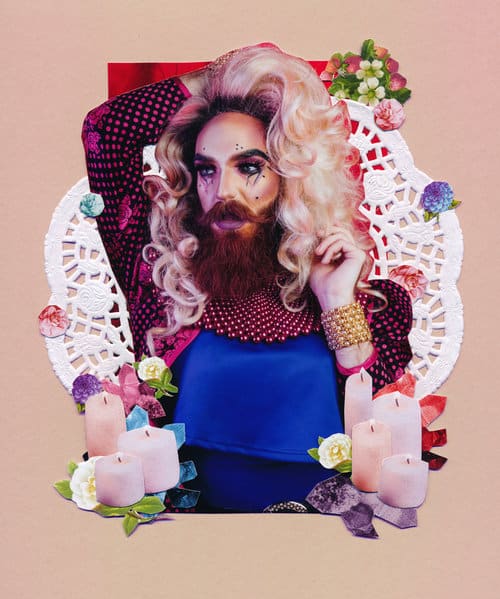
Is control is a important issue for your work?
Yeah. Before I went to SCAD, I was shooting in my garage a lot, a makeshift studio, I was also shooting outside, but whenever I got to SCAD, I had access to the studio and hot lights and that’s all I wanted to use, and all I still want to use most of the time, because there’s just so much control. I can take whatever I wanted, build a set, light it the way I want to.
Do you ever think about why control is so important for you?
The fantasy, because I have a really strong idea most of the time in my head of what I want my things to look like.
Your choice of any kind of photography you wanted, you chose one where control is a very key factor.
Yes, yes.
Have you noticed things about yourself through your work?
Yeah, actually yeah. I realized the other day, I was looking at all of my collage stuff, or you know what it was, I was like I need somewhere to archive all my physical collages so they don’t fall apart, and I bought a box, and I thought, well I have to paint the box, it has to be pretty.
And I realized, I obsessively personalize everything, and I think that’s why my work is so detailed and so, I don’t know, specific to me. But I’ve always done that, and I just realized it somewhat recently, but I mean, everything that I come into contact with I’m like, “let me paint it, put a sticker on it, let me make it look like part of my world.”
Why?
Ugh. Good question. I mean, as far as my space goes, I like to work in a space that’s conducive to the kind of work that I want to do. This bedroom is full of stuff that I’ve personalized. I had a friend walk in once and go, “oh my god, this is like a museum.” I like to work in a space that’s conducive to what I want to make, I want it to look like the world I’m trying to put on paper, if that makes sense. I think that’s probably why. And then I just want everything to fit that.
How would you describe the world you’re trying to create?
I mean color, super-colorful, most of the time. And pretty feminine, I feel like that’s a pretty good description. Feminine, colorful, and very layered. In terms of my collages, I like to have, like with the Gucci ones, lace and sequins and like a painted element, and rhinestones, just to have layers of things. I want everything to be a mixture of a craft store and Party City.


Why do you think Party City, in particular, appeals to you?
Oh it’s so fun! It’s so fun and so campy, I mean, with my Identity Crisis pictures, I feel like they kind of look like if a drag queen ate a craft store and threw up in Party City, that’s what it would look like! I think it’s so fun, it’s so colorful, just wacky. And it’s fun to use those elements to convey femininity or to play with artifice. If I said, I’m going to make a photo about femininity, instead of photographing a bow I’m photographing something crazy from a party store. Does that make sense, it feels like a fun, different, not too serious way to do things.
Why do you think that exploration of identity is so intriguing to you?
Good question. Because drag is so much of what propelled this, I got into drag then I started sort of questioning why are queens saying that you have to wear nails to be a drag queen, why are they wearing big blond wigs, what is this saying about our perception of women, I had a moment where I was like,” can I like this, is this in line with my beliefs and with my feminism and like my morals?” And then I realized it’s just really looking at things with a filter and that there are also a lot of queens who subvert ideas of femininity through their looks and their performances. So that became really interesting to me to look at how we view women, and try and turn it on its head. And I’m also just interested in creating characters. I love that, whenever I was first starting the series, I was looking to David Bowie a lot for inspiration because he created characters with everything he released, and I think that’s an interesting way to explore your work.
It hinges on this kind of focus on identity.
Mhmm.
What draws you towards that conversation?
That we can put forth things about our identity in different ways, through the way you do makeup or the way that you dress or the way that you talk. And then the way that performance can intersect with that.


Do you think your interest in identity predates your interest in photography?
Hmm. Yeah, I mean in thinking about it, whenever I was younger I was playing dress up a lot, I very vividly remember watching a Mary Kate & Ashley VHS and being like, “I need to dress like one of them!” Trying to find things in my cloest that would look like them, which I feel like that’s a pretty typical thing. I think I’ve been interested in dressing up, but I never really thought about it beyond that.
When do you think you became really interested in exploring identity through your work?
With this series, I think, that really kickstarted it. A lot of the stuff that I’ve made since then, even I mean stuff that I’ve made for school that have just sort of been small projects have sort of delved more into that. But definitely when I started this series, it got me thinking about it a lot more.
You don’t think you were considering it beforehand?
Not really, in terms of drag…because I started reading about the issues with the female representation in drag and all that stuff, so I was interested in it then, but it wasn’t something that I thought about all the time like it is now. It’s something we do all the time. Like when you meet someone, you introduce them and tell them your identifiers or whatever, like everyone, I don’t know, I think it’s universal.
Do you already have ideas for the next go round?
Yeah, I really want to incorporate sculpture, and video, too. I need to get good at video, I really need to learn the technical side of that, and I’d like to play with that for the next part. I have a big Google Doc of just idea puke, and sculpture is definitely on there, I want to play more with that. I’m also thinking about including other people in it, I think that could be interesting. But I have a lot of thinking to do.
Are very organized with your work?
Most of the time, yeah. I don’t think I would be able to function without Google Docs and a really organized filing system.
What’s the next big thing you’re really excited about?
I’m working on a set for a shoot that my friend commissioned me to do for her comedy troupe, which will be really really fun, it’s going to be 90s workout video themed, and it should be really funny and campy and cool. So I’m really excited about that, and then I’m excited to do more Identity Crisis and try and round out that world.
Do you feel that your work is really reflective of you as a whole, or that it is showcasing sides of yourself that you don’t normally show?
I want to say sides of myself I don’t normally show I guess, in my self portraiture, but I don’t know. You know what, I do feel like it’s pretty reflective, I tend to make work about things that I like and that I talk about and think about a lot already. So yeah, I think it’s pretty representative.
And I think that does it.
Cool! Thank you so much!
